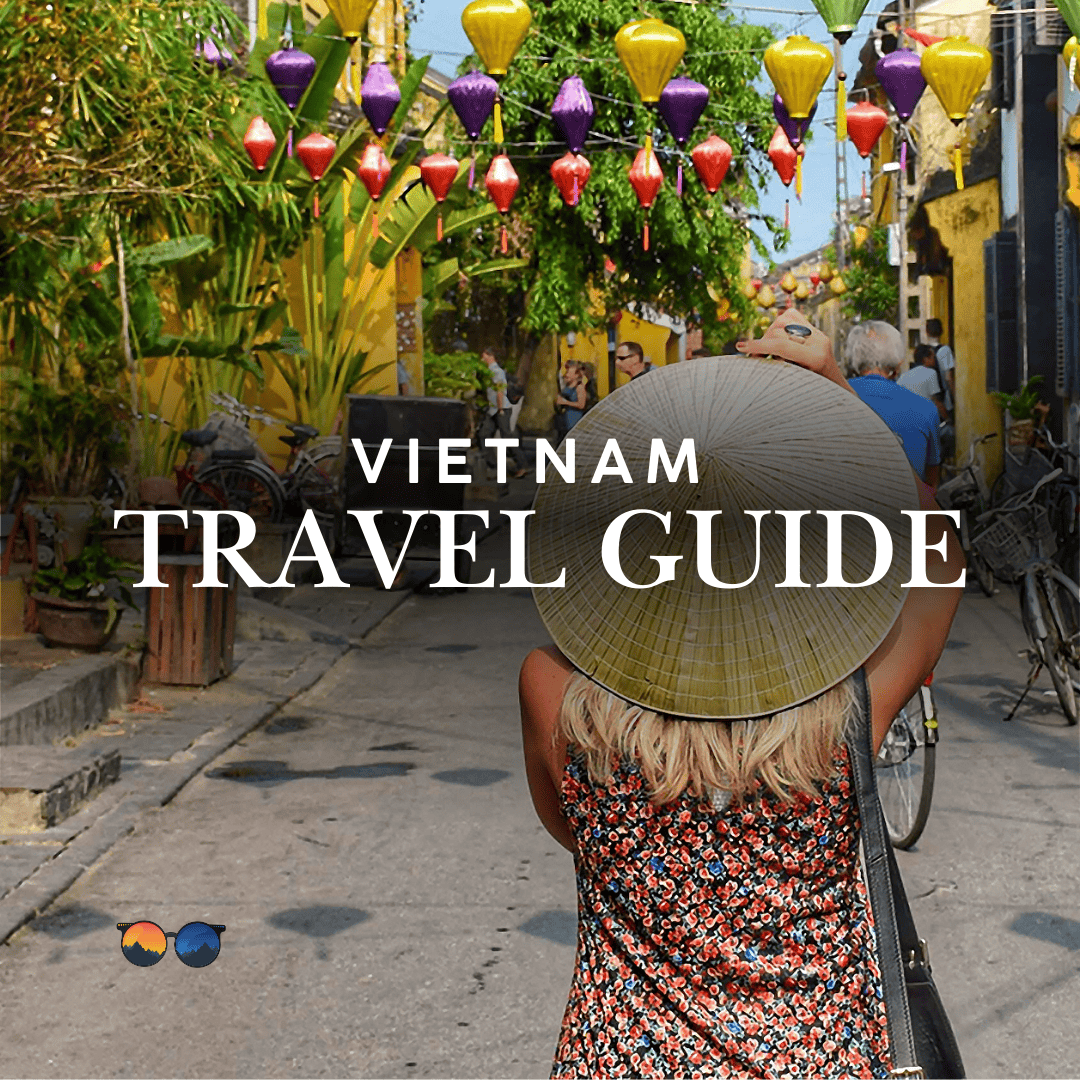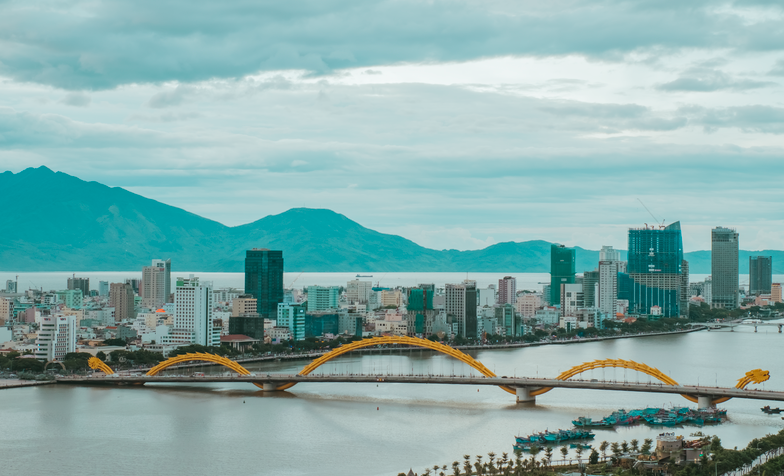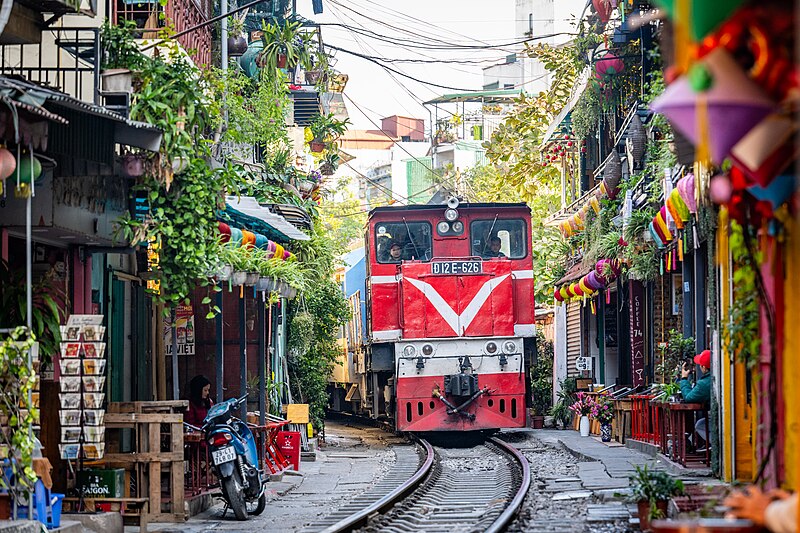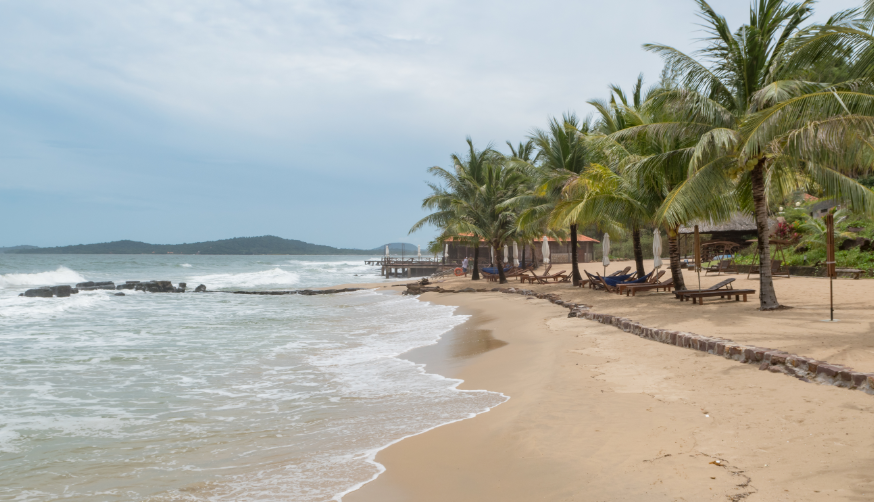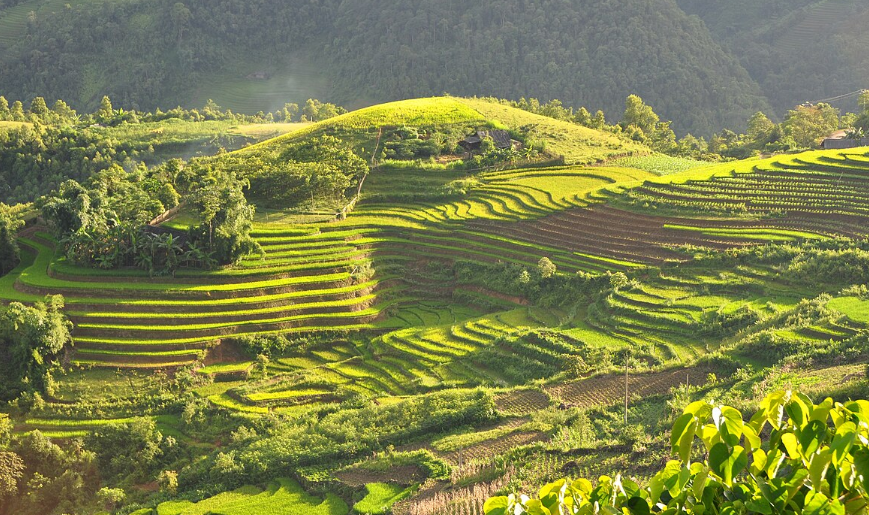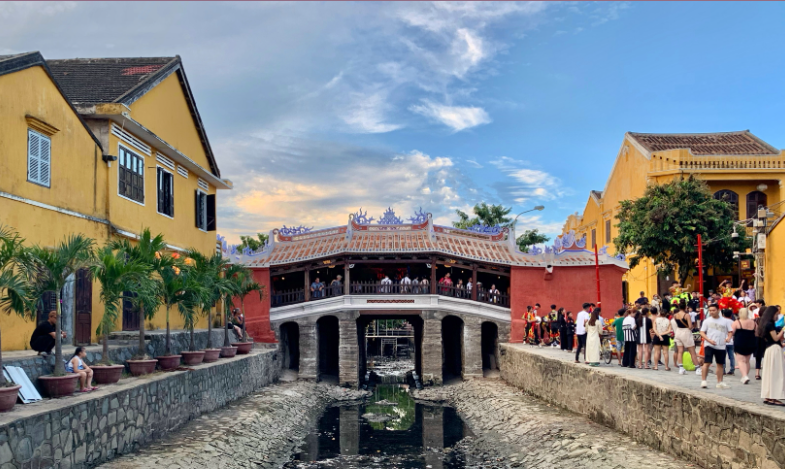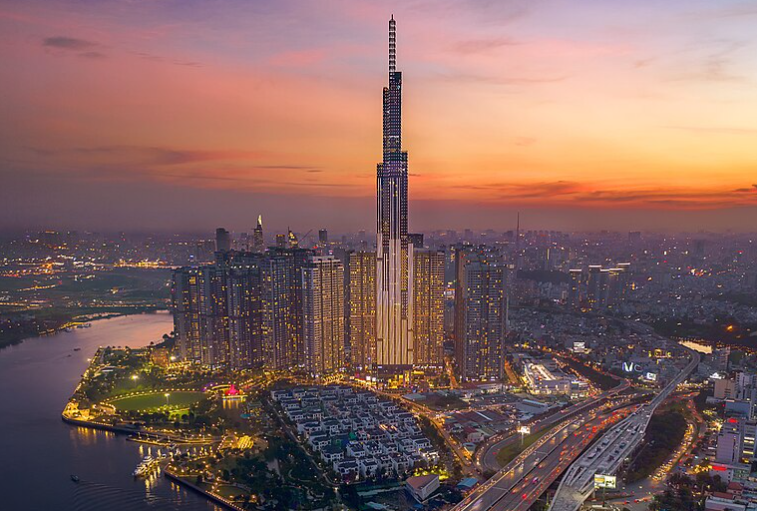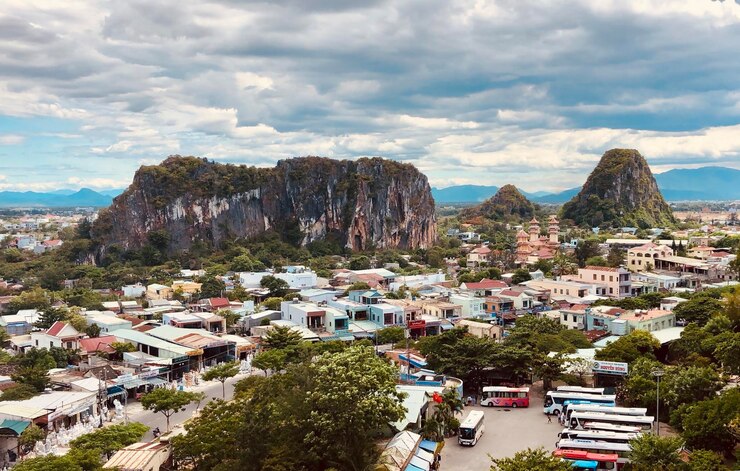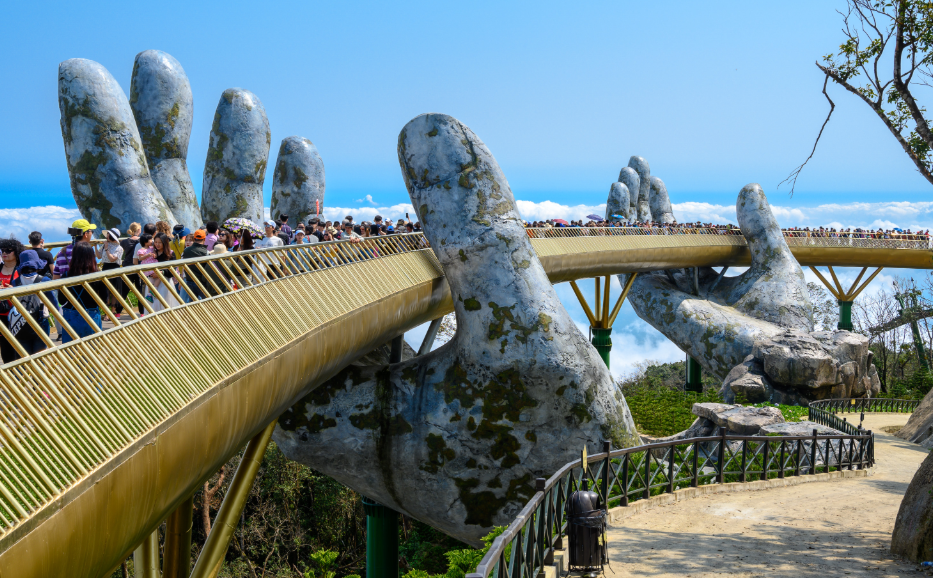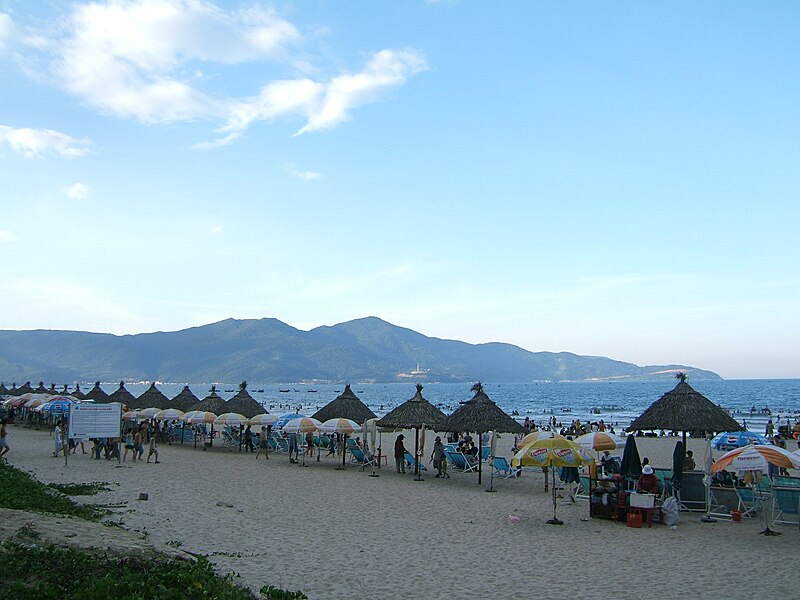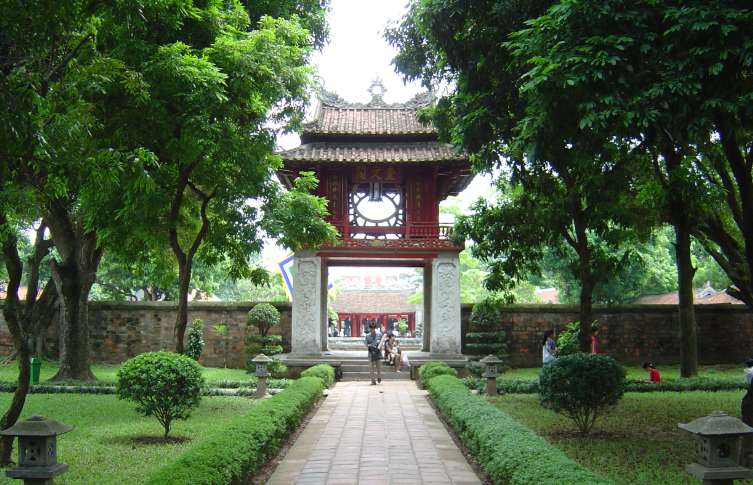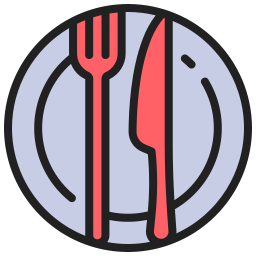Vietnam is an incredible destination that offers a mix of beautiful landscapes, rich history, and vibrant culture. So it doesn’t matter if you're traveling for the first time or returning to explore more; Vietnam offers something for everyone. This travel guide will provide you with a brief itinerary, practical tips, and cultural insights to help you explore the best of this amazing destination.
1. Hanoi
Hanoi is Vietnam's capital, where you can experience a perfect blend of history and modernity. In two days, you can explore the city's French colonial architecture, its fascinating museums, and its lively streets.
Plan To Spend Time In Hanoi
You can start your adventure by exploring Hoan Kiem Lake in the middle of the Old Quarter. Early mornings are perfect for seeing the locals practicing Tai Chi by the water. Ngoc Son Temple is located on an island in the lake and can be accessed by walking across a gorgeous red bridge.
Next, you can stroll through the Old Quarter, where narrow streets are filled with exciting activity. This is the place to try Hanoi’s famous pho (Vietnamese noodle soup) and banh mi (Vietnamese sandwich) from street vendors.
The Ho Chi Minh Mausoleum is another must-see, where you can pay respects to Vietnam’s revolutionary leader.
Apart from this, there is the Temple of Literature, Vietnam’s first university, which offers a peaceful respite and a look into Vietnam’s academic history.
In the evening, you can catch the Water Puppet Show, which is a traditional Vietnamese performance. It is usually arranged in a small theater near the lake. The specialty of this show is that it tells stories of Vietnamese folklore through wooden puppets controlled by rods beneath the water’s surface.
Tips:
Be prepared for the traffic chaos in Hanoi. Crossing the road can be difficult, but the key is to keep moving at a steady pace as the motorbikes will navigate around you.
Make sure that you spend some time on Hanoi Train Street.
Ideally, for a complete experience, 2 days are enough to explore Hanoi.
2. Ninh Binh
Ninh Binh is an undiscovered paradise and is often called “Halong Bay on land” due to its striking limestone formations. It takes a 2-3 hour drive south from Hanoi.
Plan To Spend Time In Ninh Binh
The main highlight here is the Trang An Landscape Complex, where you can take a boat ride through caves and past rice paddies. The ambiance and natural beauty of the area make it a perfect place to relax and disconnect from the city's rush.
Another great spot to visit is Tam Coc, where a boat ride takes you through towering limestone peaks.
There is another spot called the Bich Dong Pagoda, which is set against these cliffs. It is a beautiful site to explore, and the Hoa Lu Ancient Capital is a plus that offers a glimpse into the region’s historical significance as the capital of Vietnam during the 10th and 11th centuries.
Tips:
If you're planning on biking around Ninh Binh, be sure to wear comfortable shoes. The region is filled with scenic spots, so having a bike gives you the flexibility to explore at your own pace.
Considering the tourist spots in the region, a day is enough here.
3. Ha Long Bay
Ha Long Bay is a UNESCO World Heritage Site. It is a place of stunning natural beauty. Its emerald-green waters and thousands of limestone islands make it one of Vietnam's most iconic destinations.
Plan To Spend Time In Ha Long Bay
The best way to experience Ha Long Bay is by taking a boat cruise, which gives you the chance to admire the bay's scenery from different perspectives.
The cruise often includes stops to explore caves, swim, and kayak.
Sung Sot Cave (Surprise Cave) is particularly famous for its impressive size and incredible formations.
If you want a bird’s-eye view of the bay, you can hike up Ti Top Island, where a short climb rewards you with breathtaking views of the entire bay.
Tips:
For an unforgettable experience, opt for an overnight cruise. The calm waters and environment make it an ideal place to unwind after a busy few days of sightseeing.
Bring sunscreen and a hat. The weather in Ha Long Bay can get quite hot, especially in the summer months.
Considering the boat cruise and wholesome experience you can get here, our expert recommends that you spend 2 days here.
4. Hue
Hue was the former capital of Vietnam and it is known for its historical significance and imperial charm.
Plan To Spend Time In Hue
Visit the Imperial City, which is a vast complex of palaces, temples, and gardens that once housed the emperors of the Nguyen dynasty. The Forbidden Purple City within the Imperial City is a place to see where the emperor’s family lived once. Since it remains largely in ruins today, it gives a mysterious and haunting atmosphere, which is one-of-its-kind.
While in Hue, you can take time to visit the Tombs of the Emperors. The tombs of Emperor Tu Duc and Emperor Khai Dinh are particularly impressive. They offer a combination of architectural beauty and stunning landscapes.
Another spot is the Thien Mu Pagoda, which is an iconic seven-story structure by the river. It is one of the oldest religious sites in Vietnam.
Tips:
Hue is also known for its cuisine, so don’t miss the chance to try bun bo Hue, a flavorful beef noodle soup that’s different from the pho you’ll find elsewhere in Vietnam.
Hue can be hot and humid, so wear light, breathable clothing. You may also want to bring an umbrella or hat to protect yourself from the sun.
Our expert recommends you to spend 2 days exploring this city as it contrasts beautifully with the urban centers of Vietnam.
5. Hoi An
Hoi An is a well-preserved ancient town known for its mix of different cultural influences. It feels like a town that seems frozen in time. Hoi An’s Ancient Town is a UNESCO World Heritage Site, where you can walk through narrow streets lined with centuries-old buildings. The town is famous for its beautiful blend of Chinese, Japanese, and French architecture, creating a unique atmosphere.
Hoi An is known for its lantern-lit evenings, where the streets are illuminated by colorful lanterns. The town is also a great place to shop for custom-made clothes, particularly suits, dresses, and traditional Vietnamese attire.
On the outskirts of town, the An Bang Beach offers a peaceful retreat with soft sand and clear waters. It's a great place to relax after exploring the historic town center.
Tips:
Hoi An is best explored on foot or by bike. Be sure to try the local delicacies like cao lau, which is a noodle dish unique to the town, and white rose dumplings.
1 day in Hoi An is enough to experience the city at its best.
6. Ho Chi Minh City
Ho Chi Minh City was formerly known as Saigon and it is often called the "Heart of Modern Vietnam." It is one of the largest and most fast-paced cities in Vietnam, where modern skyscrapers stand side by side with colonial-era buildings.
Plan To Spend Time In Ho Chi Minh City
You can visit the War Remnants Museum, which provides a detailed and moving account of Vietnam’s history during the Vietnam War.
Another place to visit here is the Reunification Palace, where the South Vietnamese government fell in 1975. Basically, this place is another reminder of the city’s turbulent past that you can experience.
Apart from this, you can explore Dong Khoi Street for high-end shopping or explore the lively Ben Thanh Market, where you can find everything from fresh produce to souvenirs.
Lastly, Saigon Notre-Dame Basilica and Saigon Central Post Office are two stunning examples of French colonial architecture that stand out in the city, and we think you must explore them if you are in Vietnam for a complete cultural expedition.
Tips:
Ho Chi Minh City is known for its heavy traffic, so plan your day accordingly. Consider using a Grab (Vietnam’s equivalent of Uber) to avoid the hassle of taxis.
No trip to Ho Chi Minh City is complete without experiencing its vibrant food scene. Be sure to try com tam (broken rice) and banh xeo (Vietnamese pancakes).
Our expert recommends that 2 days is enough to explore the city’s main attractions.
Practical Tips For Traveling In Vietnam
Currency: The official currency is the Vietnamese Dong (VND). ATMs are widely available in major cities, and credit cards are accepted at most hotels and upscale restaurants.
Language: Vietnamese is the official language, but English is spoken in major tourist areas. Learn a few basic Vietnamese phrases to enhance your experience.
Transportation: Vietnam has an extensive public transportation network, including buses, trains, and domestic flights. Motorbike taxis (xe om) and Grab are also widely available in cities.
Weather: Vietnam has a tropical climate, with the north experiencing cooler winters and the south staying warm year-round. The rainy season typically runs from May to October in the south and from June to August in the north.
Conclusion
Vietnam offers an incredible range of experiences – vibrant cities, ancient sites, stunning natural beauty and more. If you're interested in history, culture, or nature, this Vietnam travel guide should help you plan an unforgettable trip. This is basically a starting point to help you plan your journey, but there's so much more to discover. With the right preparations and a sense of adventure, Vietnam is a destination you won’t forget.
At Connecting Traveller, we believe every trip should be personal. We specialize in creating customized itineraries that match your interests and needs while making sure that you get the most out of your time in Vietnam. Our local travel experts are here to offer insider tips so you can easily avoid the usual tourist traps and get the best assistance to the best spots. Reach out to us today to start planning your perfect trip to Vietnam. Let Connecting Traveller help you create a travel experience that’s truly your own.
FAQ
How many days in Vietnam is enough?
7 to 10 days is enough to explore the major highlights of Vietnam, including Hanoi, Halong Bay, Hoi An, Hue, and Ho Chi Minh City. For a more in-depth experience, consider extending your trip to 2 weeks.
Where to go in Vietnam for first timers?
First-timers should visit Hanoi for its cultural history, Halong Bay for its stunning landscapes, Hoi An for its ancient town charm, Hue for its royal heritage, and Ho Chi Minh City for modern city life and history.
Do you need a guide for Vietnam?
While not necessary, having a guide can enhance your experience, especially in areas with rich history or where language might be a barrier. A guide can help with local customs and provide deeper insights into cultural sites.
Is Vietnam cheap or expensive?
Vietnam is generally considered affordable for travelers. Accommodation, food, and transportation are budget-friendly, though some high-end hotels and tourist areas can be more expensive. Street food is a great value.
What is the best time to visit Vietnam?
The best time to visit Vietnam is between September and April, when the weather is cooler and drier, especially in the northern and central regions. December to March is particularly ideal for pleasant temperatures.
Should I carry cash in Vietnam?
Yes, it's advisable to carry cash in Vietnam, especially in smaller towns or rural areas. While credit cards are accepted in larger cities, many shops and markets, especially in the countryside, only accept cash (Vietnamese Dong).
Is a Vietnam visa free?
Vietnam offers visa exemptions for citizens of several countries for stays up to 15 days. However, most travelers need a visa, which can be obtained online or at the embassy, depending on their nationality and the length of their stay.
10 0



